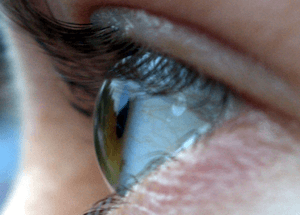Peripheral vision facts for kids
Peripheral vision is your ability to see things that are not directly in front of you. It's what you see "out of the corner of your eye." This type of vision helps you notice movement and objects all around you, even when you're looking straight ahead. It's super important for everyday activities, like walking without bumping into things or playing sports.
Contents
What Peripheral Vision Does
Your eyes have different parts that help you see. When you look directly at something, you are using your central vision. This part of your eye, called the fovea, helps you see details clearly. Peripheral vision, on the other hand, uses the outer parts of your eye. It's not as sharp as central vision, but it's great for other things.
Key Jobs of Peripheral Vision
Peripheral vision has several important jobs:
- Spotting Familiar Things: It helps you recognize shapes and objects you already know, even if you're not looking right at them. For example, you might see your friend walking nearby without turning your head completely.
- Noticing Movement: It's very good at picking up movement. This is why you might notice a car coming from the side or a ball rolling towards you, even if you're focused on something else. This ability is super helpful for safety!
- Seeing the Big Picture: Peripheral vision gives you a general idea of your surroundings. It helps you understand the background and the overall scene, while your central vision focuses on the details. Think of it like seeing the whole forest, while your central vision focuses on one tree.
- Balance and Movement: It plays a big role in helping you keep your balance and move around safely. It gives your brain information about where you are in space and what's around you.
How It Helps You Every Day
Peripheral vision is working all the time, even when you don't notice it!
- Walking: It helps you avoid tripping over things or bumping into people.
- Driving or Biking: It lets you see other cars, bikes, or people on the sides of the road.
- Playing Sports: Athletes use it constantly. A basketball player might see a teammate open for a pass without looking away from the basket. A soccer player can see defenders approaching from the side.
- Reading: Even when you're reading, your peripheral vision helps you see the next words coming up, which makes reading faster and smoother.
Images for kids



